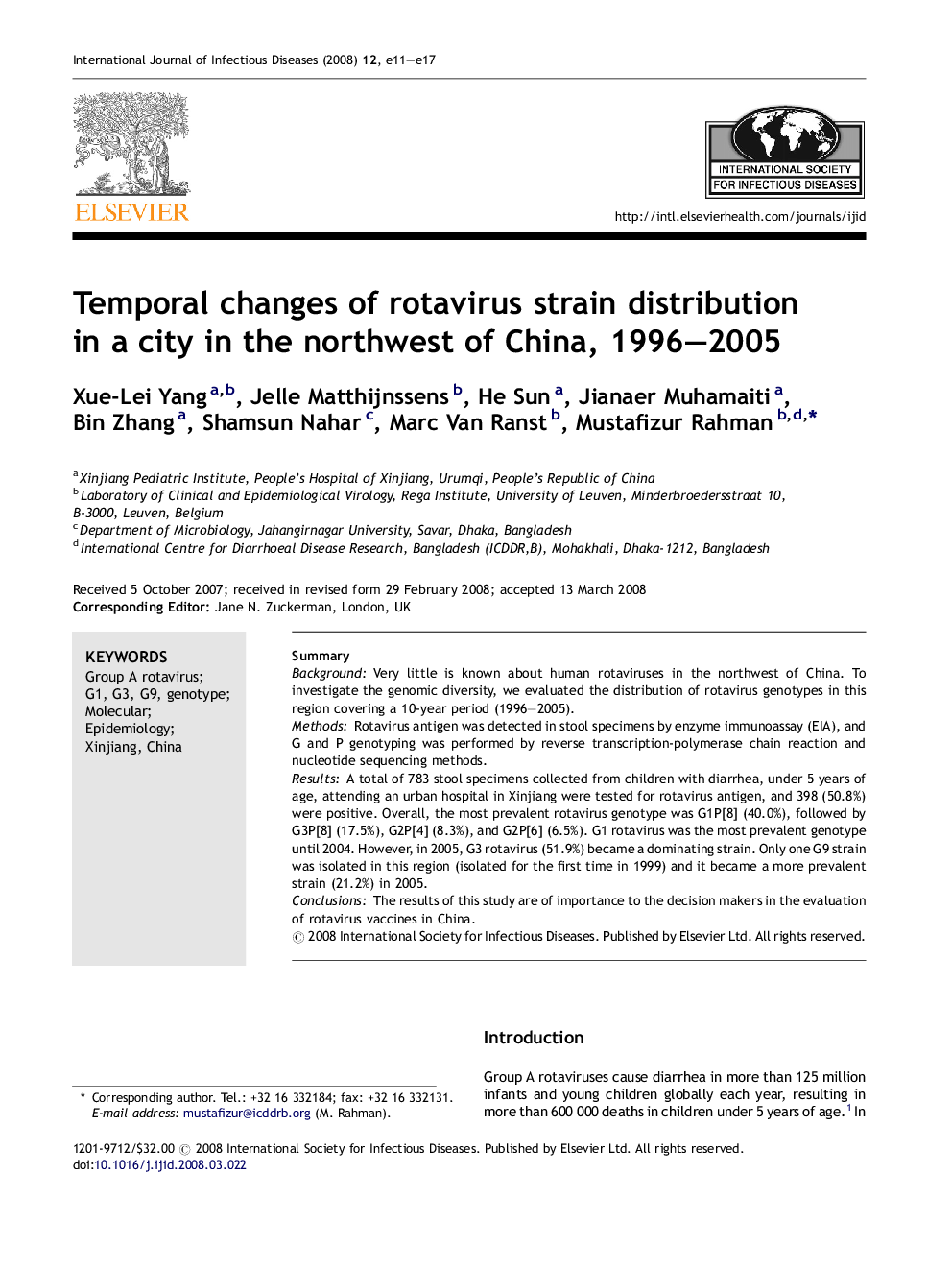| Article ID | Journal | Published Year | Pages | File Type |
|---|---|---|---|---|
| 3364830 | International Journal of Infectious Diseases | 2008 | 7 Pages |
SummaryBackgroundVery little is known about human rotaviruses in the northwest of China. To investigate the genomic diversity, we evaluated the distribution of rotavirus genotypes in this region covering a 10-year period (1996–2005).MethodsRotavirus antigen was detected in stool specimens by enzyme immunoassay (EIA), and G and P genotyping was performed by reverse transcription-polymerase chain reaction and nucleotide sequencing methods.ResultsA total of 783 stool specimens collected from children with diarrhea, under 5 years of age, attending an urban hospital in Xinjiang were tested for rotavirus antigen, and 398 (50.8%) were positive. Overall, the most prevalent rotavirus genotype was G1P[8] (40.0%), followed by G3P[8] (17.5%), G2P[4] (8.3%), and G2P[6] (6.5%). G1 rotavirus was the most prevalent genotype until 2004. However, in 2005, G3 rotavirus (51.9%) became a dominating strain. Only one G9 strain was isolated in this region (isolated for the first time in 1999) and it became a more prevalent strain (21.2%) in 2005.ConclusionsThe results of this study are of importance to the decision makers in the evaluation of rotavirus vaccines in China.
